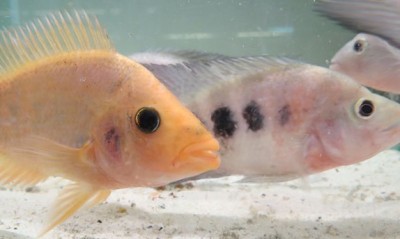Namely, how and why do variants of the same animal exist in nature? In theory, different color morphs (variants) should be equally subjected to natural selection.
Will Sowersby, a PhD student at Monash University is lead author of a paper in the Journal of Evolutionary Biology which looked at a species of Central American freshwater fish to look at how different colors are maintained in the species. The team looked at a species of fish called the red devil cichlid, which comes in two colors - one is dark (gray through black with dark patterns) and the other is gold, (yellow through red).
The gold colored fish is genetically dominate but the darker colored fish is much more common.

The red devil cichlid. Credit: Monash University
"With this species, the darker individuals appear to be able to alter the shade of their body color and patterns to better match their environment," said Sowersby. "We wanted to assess whether this had a part to play in how different color morphs can exist in a population, and why the gold color fish is rarer."
The researchers filmed the red devil cichlids over both dark and light surfaces. Screenshots were then analyzed to measure the amount of change to the shade of the fish's body color. After analysis they found that the darker fish could alter its brightness to match the surface it was on, while the gold colored fish could not.
"These results suggest that differences in the ability to match backgrounds could play a potentially important role in maintaining color frequencies in the wild," Sowersby said. "Given the complexities of color variants in species, more work is needed to understand how differences in coloration might influence the susceptibility of dark and gold individuals to different predators and under different environmental conditions."
Citation: Will Sowersby, Topi K. Lehtonen, Bob B. M. Wong, 'Background matching ability and the maintenance of a colour polymorphism in the red devil cichlid', Journal of Evolutionary Biology DOI: 10.1111/jeb.12572





Comments